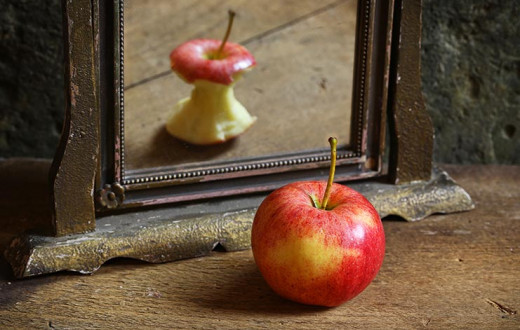Bangalore, India

Lord Krishna said, ‘Mam ekam sharanam vraja’, meaning, 'Come to me alone'.
He said this to his dearest disciple Arjuna to make his mind totally be there to value the present.
Whenever this has been said (I am the only way), it has been said from the higher consciousness, not to make one a fanatic. It has been said to make one realize the truth, and the truth is only One, and so they said, 'It is the only way', to emphasize that (One truth). Otherwise the mind discards the present.
The same thing happened with Jesus. People at that time were only thinking about somebody in the future, or the past. That is why he said, 'Right now, right here, I am the only way'. He said this from the ‘I am’ consciousness.
The Bible was also written 70 years after Jesus Christ left His body. Just imagine how much His words could have been interpreted; or how these same few words could have been translated at that time, is a big question mark.
When Jesus said, ‘I am the son of God’, the church interpreted it as Jesus is the only son of God.
What Jesus said was, ‘I am the son of the only Father.’
There is only one father for everybody, and He said, ‘I am the son of the only one father’. Otherwise why would He say, ‘Let us pray to our father in heaven?’
He says, 'Our father', which means everyone’s father. Then how can he be the only son of God? Then what about everybody else? What about other people who were born before him; are they not the children of God?
How can we all pray, ‘Our father in heaven?' Then we should only pray, ‘Jesus’s father, you help me. You are not my father!’
This is a result of wrong interpretation. When Jesus said, ‘Our father in heaven’, he meant that He is the father of everybody.
He said, 'The son of the only father', but this got twisted to, ‘The only son of the father.’
Just shifting one word from here to there can make a big difference. This is the reason why, when interpreting the scriptures, one should always take into consideration when, where and how it was said, to whom it was said, and for what purpose.
Knowledge always is contextual, even though truth is timeless and universal. But there is always some context to knowledge.
Jesus once said, ‘I have come to put father against son, and mother against daughter. I have come to put fire and not make peace.’
If you take this out of context and say, 'Look at what Jesus said', then that would be wrong. You have to see where He said it, what he said and how He said it.
Jesus came to bring a revolution. Lord Krishna came to do the same thing, bring about a big revolution, and change the mindset of people.
Mohammad Paigambar also did the same. People were so lost in rituals that they would never go deep within and pray quietly. So He said, ‘Come on, enough of this. You are just going from one statue to another all the time. You are not closing your eyes and going within and meditating. Enough, now close your eyes and meditate!’
The rituals had become a business. People went to worship the idols out of fear. So he said, ‘Just go within and pray.’
Nirgun nirakar parabrahma, pray to the formless, unmanifest divinity.
This is the essence of Vedanta. It says, go from the form to the formless. And how? Through meditation.
There are three upayas (ways). First is Anva upaya, through prayer and worship. Second is Shakta Upaya, through meditation. And third is Shambava Upaya, through awareness, or effortless remembrance of the Lord (smaran).
Even though Mohammad said no forms are needed, He knew that people require some symbol, and so He put the Kaaba stone. Just like a lingam, a Kaaba Stone was kept, so one can go round it, and do namaz. So a symbol is essential to make the mind become one pointed.
In Vedic times, there were no idols; the Arya Samaj engaged in havans (sacrificial fire) with mantras (chanting). But not everyone could understand this philosophy, but anyone can relate to a form, or to idols.
See, if it is any great man’s birthday, people go and put garlands on their statues. On Gandhi Jayanti, people go to the Gandhi statues, put a ladder, climb up and garland the statue.
Without a picture it is impossible in the present age to pay homage to someone. A picture is needed. That is how a symbol became so essential in all religions. It is inevitable.
Our Rishis knew this and so they said, ‘Okay, you can begin with idols, symbols and forms. But only for a short time, and then go and do visarjan (immerse the idols in water).’
That is the tradition, for ten days you do Ganapati Pooja and then you immerse the idol in the water.
That is why temples were built everywhere. It was not necessary to go to temples every day. Only when you feel the need for a symbol, you can go, sit there and pray.
And temples are done with Mantra Shakti, not just with idols. Prana or life force energy is induced in the place (temple), that is how temples became powerhouses.
People were very intelligent in the ancient times, they understood human nature and knew the human consciousness.
Did you hear the story I said a few days ago?
Once, a student came to a Master and said, ‘I failed my exam.’
The Master said, ‘Oh, you are so lucky.’
Then, another gentleman came to the Master and said, ‘I lost my job.’
The Master replied, ‘Oh, you are so lucky’.
A third gentleman came and said, ‘My wife left me.’
The Master replied, ‘Oh, you are so lucky.’
So, when anyone would come and say something, the Master would say, ‘Oh, you are so lucky’; and somehow they would all get the message.
An onlooker found this very puzzling. He asked the Master, ‘How can you say to the boy that he is so lucky when he failed in his exam?’
The Master explained, ‘Yes, a person who has failed in an exam will study the same subject again and again, and he will become so thorough in that subject that he will become an expert.’
Once a Swamiji had come here, and he said a very interesting thing. He said that in 1942 there was only one surgeon in Bangalore and this surgeon had failed his MBBS seven times!
In those days, whenever people had appendicitis operation, the doctors would cut a particular vein because of which some of the patients would die. They did not know which vein they were cutting. So this gentleman (who failed seven times) discovered that and became very well known and very respected. Later on he also got an international honor. But he had failed seven times in MBBS!
So if someone has failed in an exam, they study more. That is why the Master said that people who fail, not all though; some who fail, can become very lucky, because they can study the same subject again and again, and become so thorough.
To the person whose wife ran away and left him, the Master said, ‘Now you know what mistakes you did. Till now you were so engrossed in your own thing. Now you know how to treat a woman, and what mistakes you should not do.’
To the person who lost his job, the Master said, ‘Day and night you were engrossed in your job. You didn’t have time to even reflect on yourself; ask yourself questions like, ‘What is life? Who am I? What do I want? Now you have time for that'.
Finally, another gentleman came and said to the Master, ‘I am so lucky, I have everything. I am so grateful.’
The Master gave him one slap, and the person started dancing. He became very happy.
The Master explained to the onlooker that when you say, ‘I am grateful’, you are surrounding the ‘I’. The ‘I’ is important, ‘I’ am so lucky, ‘I’ am grateful. When this ‘I’ dissolves, you become like a child, and become one with everybody. Existing and not living, is ignorance. Living as though you don’t exist, is enlightenment. Simple and natural!
Seva is a must in everybody’s life because it brings fulfillment and happiness. And you do as much as you can, without tiring yourself down too much.
I think you have too much free time to think about concepts and all that. What is a concept? Teaching has a system, and the system makes it very effective.
All knowledge could just be taught anywhere and anyhow (referring to an ineffective manner); like the Nati Vaidyas (local medics) in villages. When people get sick in villages, they go to these Nati Vaidyas who prescribe some adhoc herbs, and tell them to grind it and drink it, and everything will be alright!
There is a saying in Sanskrit, ‘Yasya kasya tarormoolam, Yena kenaapi choonitam, Yasmai kasmai pradaatavyam yadyaa tadva bhavishhyati.’
It means, 'Just pluck any trees, any root, or anything, grind it, make it into a paste, and give it to anybody, and then anything can happen!’
This is an unmethodical way of practicing medicine, and there are several people who are doing this in India. It is a very common thing.
In India everybody is a doctor, and everybody gives some or the other grandmother’s remedies for anything. There is some value to the grandmother’s remedies as well, I am not saying no, but a doctor who is systematically trained brings greater value since he knows the subject thoroughly.
A herboligist knows the herbs thoroughly; it is not just anybody doing anything, and anything can happen. In the same way, teaching is also a methodology.
Though everyone may know the points, and have the knowledge, anybody teaching it, in any way will not yield the desired results. That is why a system is in place.
Even in the ancient days, students would go and study thoroughly at Gurukuls, before they became acharyas (teachers).
Sadhana, satsang, good company are necessary. If you sit in the company of people who are greedy and have a negative mindset, then your mind becomes totally engrossed in such things. So, uplift the spirit with wisdom, and effortlessly you will see that it happens.
See what mistakes you are making. Do you have acceptance? Do you serve a person? Why would someone not like to be with you if you are a fountain of joy and enthusiasm?
Why would someone not like to be with you if you are full of love and service, if you are hollow and empty, if you are in wisdom and knowledge, everyone will want to spend time with you. So keep yourself soaked in knowledge, day and night.
Sleep with knowledge, and when you wake up, listen to knowledge again. Read Yoga Vasistha, Ashtavakra Gita and Bhakti Sutras.
We have been given such precious knowledge. Just one sutra at a time is enough. For example, 'Yogash chitta vritti nirodhah, Tada drashtuh svarupe avashthanam', establishing in the seer and not in the scenery is yoga. Dwelling on such knowledge, one can move back to the seer, recollecting that all this is scenery.
'The body is the scenery, let me find the seer', this takes you back in, to the source immediately. It makes you realize that the body is all empty. There is emptiness outside, and everything is empty.
Look at a cup; there is space inside and outside. The body is a cup, you are a supatra (a good cup), a mind which is hollow and empty.
Kupatra is when the mind is filled with all rubbish things. You are a supatra, a good cup, which is free, clean inside and outside. When you realize this, immediately you are able to relax; every cell in your body starts relaxing. All the garbage leaves, all negative thoughts disappear.
You are a clean vessel, hollow and empty. How joyful this state of mind is. Then you can work 18-20 hours a day, without feeling tired and bogged down; the mind is fresh. Every day, you should rest well for about six hours.














































